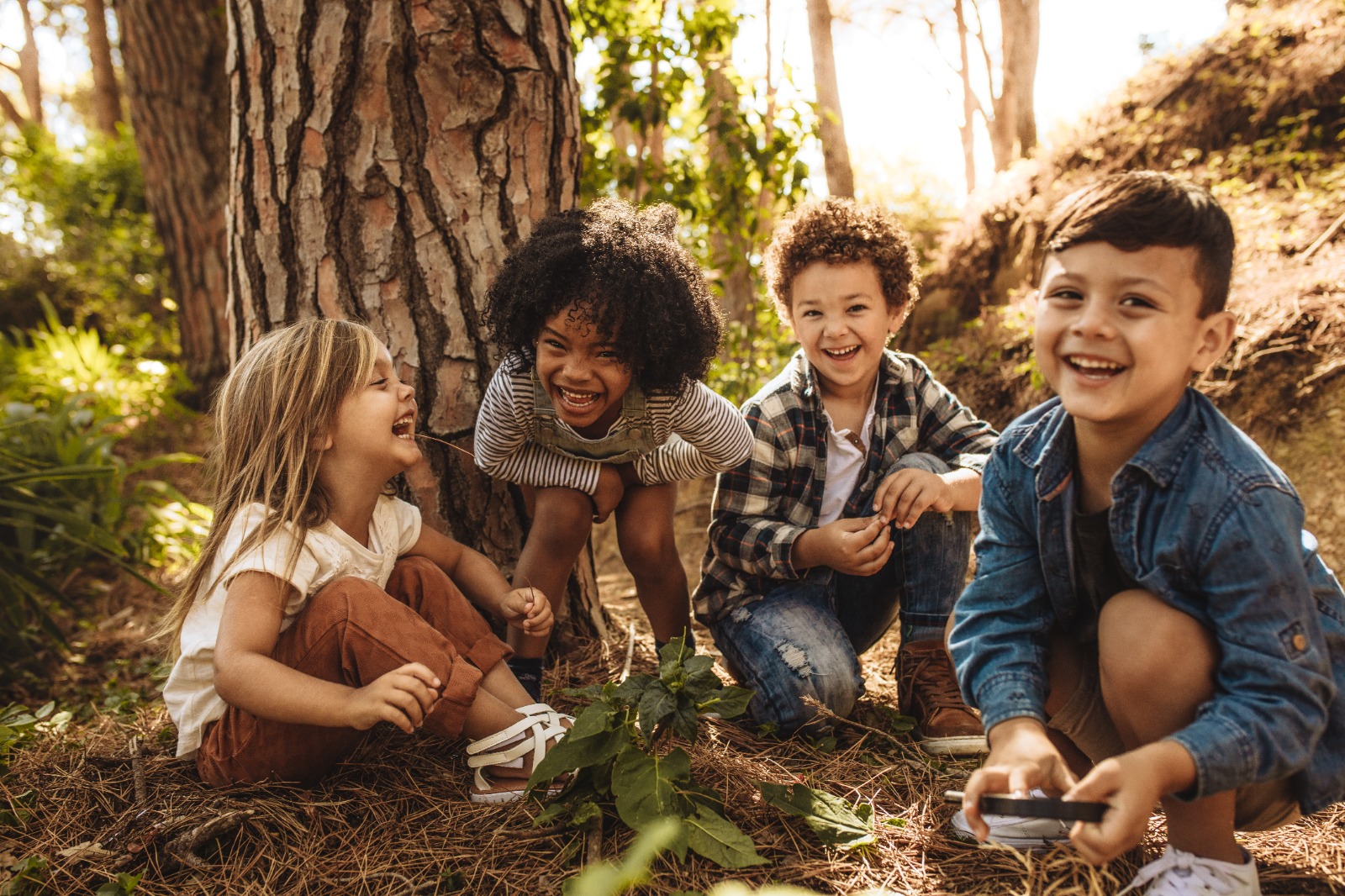The Benefits of Outdoor, Risky Play and Why Children Should Play Outside More!

Outdoor play is a necessary part of childhood. So why aren’t children playing outside as much anymore?
Whether it is due to the shifting priorities in our rapidly changing world, or the fast advancements in technology that have children more engaged with screens than ever, we can collectively agree that we are experiencing a shift from outdoor to indoor play. According to the research team at outsideplay.org:
-
37% of children play outside everyday;
-
33% of school-aged children meet recommended physical activity guidelines (60 - 120 minutes/day);
-
12% of preschoolers meet the activity guidelines (180 minutes/day);
-
Students in grades 6-10 play outdoors for an average of 15 minutes/day;
-
21% of children play more than 1.5 hours outside each day (ParticipACTION, 2020); and,
-
7% of kids under 10 are allowed to go out on their own.
Could the safety concerns with outdoor play be the main reason for this shift and is risky outdoor play harmful for children?
Children are actually less likely to require medical attention due to an injury from outdoor play than compared to organized sports and the likelihood of dying from an injury is 0.0059 per cent. In addition, the statistics of a child being abducted by a stranger is so small that this data is not even collected (Brussoni, 2017). When it comes to outdoor play, limits are often put on children for what they can do outside. We don’t want them to get hurt or for anything bad to happen to them, especially at school.
So, what can we do about the decreasing trend in children’s outdoor play?
Dr. Mariana Brussoni’s research lab and team are working to reverse the trend of limiting outdoor and risky play through a more balanced approach. They want folks to understand the benefits that playing outdoors has on children’s physical health, development and well-being. The risks that come with outdoor play provide opportunities for children to be more physically active, to move their bodies in different ways, and makes them feel more free (Brussoni et al., 2015). The kinds of experiences children have during outdoor risky play encourages them to use their imagination because of the increased affordances for play that rocks, sticks, sand and leaves can provide and how they interact with these play spaces.
Some could argue that children can use their imagination while playing indoors, which can also be safer, but playing outside is very different. Below are additional benefits that playing outdoors has on children according to outsideplay.org and Dr. Brussoni’s research lab and team:
-
One extra hour per day of outdoor play means 762 more steps, 13 less minutes of sedentary time and 7 more minutes of moderate to vigorous physical activity.
-
Children who play outside get 2000 more daily steps than those who play indoors (ParticipACTION, 2020)
-
Concentration and attention spans are improved when playing outdoors.
-
Playing at heights (e.g., climbing a tree) means learning to test limits and define personal boundaries;
-
Fundamental movement skills are built when playing at speed (e.g., running, biking, sliding);
-
Playing with tools (e.g., hammer, nails, wood) develops fine motor skills, hand-eye coordination, personal responsibility, and attention to detail while learning the principles of science;
-
Learning how to manage risks while keeping safe happens when near different elements (e.g., fire, stream, lake);
-
Independence is built when there is a chance of getting lost (e.g., adventuring around forests, roaming around their neighbourhood);
-
Rough and tumble play (e.g., wrestling) teaches how body’s work and develops social skills such as conflict resolution, teamwork, and self-advocacy by learning what consent looks and feel like at a young age; and,
-
Environmental awareness and stewardship is developed through an instilled sense of responsibility to connect and protect with nature and wildlife (Weir, 2020).
Incorporating outdoor play into the daily routine of Kindergarten to Grade 12 students at school can have a profound positive impact on their overall development. It provides a well-rounded educational experience that complements classroom learning and supports well-being.
If you are looking for ways to bring your classroom outdoors, Outsideplay.org has created a brand new tool for elementary teachers which revolves around 3 key ingredients: time (e.g., schedule), spaces (e.g., make them interesting and involve loose parts), and freedom (e.g., let them play how they want to and incorporate risks) (Brussoni et al., 2015).
The tool offers 16 modules in the “Learning Hub” that teachers can explore and complete which include videos and resources:
-
What is Risky Outdoor Play?
-
Bridging Risky Play and Learning
-
Creating YES Spaces
-
Observation and the Role of the Teacher in Risky Play
-
Prepare for All Weather
-
Core Routines
-
Urban Hazards
-
Rural Hazards
-
Grab and Go Resources
-
Finding Like-Minded Colleagues
-
What is Emergent Learning?
-
Numeracy and Mathematics Outdoors
-
Science Outdoors
-
Literacy and Language Learning Outdoors
-
Making Learning Visible
-
Loose Parts
The modules are separated into four themes that “offer valuable insights and hands-on resources to begin locating play and learning outdoors”:
-
Outdoor Play & Learning in Schools: Helps teachers understand the potential of outdoor play and learning in elementary schools.
-
Getting Started: Helps teachers prepare for outdoor play and learning.
-
Emergent Learning: Helps teachers understand how emergent learning supports outdoor play and learning.
-
Assessment: Helps teachers assess for reporting purposes.
There are also “Discussion Questions” and a “Speaker Series” for further professional learning.
For more information on the benefits of outdoor play and how to integrate this into your instruction, check out the resource links that were used to write this feature article:
Outsideplay.org "Play Resources"
Brussoni, M., et al. (2015). What is the relationship between risky outdoor play and health in children? A systematic review. International journal of environmental research and public health, 12(6), 6423-6454.
Brussoni, M. (2017) Why kids need risk, fear and excitement in play. Retrieved from: https://theconversation.com/why-kids-need-risk-fear-and-excitement-in-play-81450
ParticipACTION. The Role of the Family in the Physical Activity, Sedentary and Sleep Behaviours of Children and Youth. The 2020 ParticipACTION Report Card on Physical Activity for Children and Youth. Toronto: ParticipACTION; 2020.
Weir, K. (2020). Nurtured by nature: Psychological research is advancing our understanding of how time in nature can improve our mental health and sharpen our cognition. Monitor on Psychology, 51(3).








